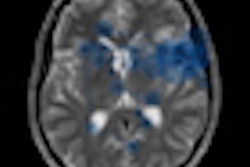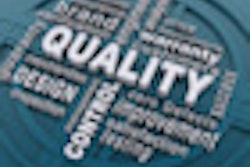VIENNA - The term "audit" may strike fear into the hearts of even the finest organized radiology departments, particularly following the release of new guidelines from the European Commission. Performed well, however, clinical audits can actually be an effective way to support -- and even promote -- your radiology services, delegates heard Saturday at the 2010 European Congress of Radiology (ECR).
In the midst of a global credit crisis, with rising pressure on healthcare systems to cut costs and find efficiencies, it's perhaps no wonder that the ECR's Audit session was full to overflowing with attendees keen to learn how best to deal with the dreaded audit. For many, however, the burning question was, "Why do we even need to do this?"
"Audit is an unfortunate term because it comes from the financial sector and sounds deeply unfriendly," noted Jane Adam, chair of the ECR's audit and standards subcommittee, who outlined the advantages and delivered a clear, step-by-step process for a successful outcome.
"It should really be seen as a positive way to raise standards in your work, or across the department," she said, "and it is important that we take clinical audit seriously because the European Commission [EC] published new guidelines for it in November 2009, giving a very comprehensive guide and methodology."
The EC defines this, in guidance available via its Web site, as "a systematic examination or review of medical radiological procedures. [The examination] seeks to improve the quality and the outcome of patient care through structured review whereby radiological practices, procedures, and results are examined against agreed standards for good medical radiological procedures."
The more straightforward ECR view is that a clinical audit is fundamentally a tool "designed to improve the quality of patient care, experience, and outcome."
External auditors can be used to assess performance and compliance with local or national best practice, although it's also possible to self-audit, which is the approach currently recommended by learned bodies in the U.K. -- along with Germany, a leader in creating and implementing local and national audits within European radiology.
Commons types of audits
Often split into three areas, clinical audits in radiology usually focus on structure, process, or outcome.
A structure audit evaluates the performance of the entire organization or department, and may include management structure, the level of equipment available, staff competence, and level of training.
A process audit is the most common assessment undertaken in radiology departments, as they operate complex procedures with several intricate processes running simultaneously. It will often include processes for:
- Request handling
- Waiting times
- Radiation exposure (dose received, justification, and optimization)
- Efficiency (scanner use and booking systems)
- Examination protocols (how often are they adhered to in full?)
- Communication of reports (are they timely, clear, and relevant?)
Finally, the outcome audit -- often viewed as the most difficult to conduct in a tangible and productive manner -- can look at issues such as patient satisfaction, complication rates, diagnostic accuracy, and standards.
As standards are often dictated by local circumstances (i.e., access to scanning equipment, numbers of patients and staff, training budgets, etc.), Adam explained that when considering a clinical audit, it's vital to set your sights on an appropriate target.
"It's important to choose a standard that is right for you, even though it may not be the best in the industry," she said. "It's a mistake, however, to set a standard against which you already prevail, as that negates the whole point -- which is to try to improve what you do."
The audit step-by-step
The path to achieving a successful clinical audit can vary, furnishing radiology departments with a wealth of choice from self-auditing against internally-driven standards through full accreditation following external audit.
The process should include the following:
- Choose a standard: Remember, this must be adhered to by human beings -- so allow for human nature. Set high standards, but beware of being unfeasibly draconian.
- Choose your indicator: What, specifically, will you measure to evaluate your quality?
- Decide on the sample size: Are you auditing one function or the entire department?
- Retrospective or prospective? When collecting data, remember that people will react to news of a prospective "audit" quickly, and change their behavior accordingly.
- Compare your performance against the standard: This is easy -- you will, or will not, have achieved the level quality you desired.
Suppliers and guardians of standards include recommendations from learned bodies, group consensus statements, and, of course, the relevant providers in law.
In all cases, sticking by a few rules should smooth the process, ultimately yielding a valuable and positive message for you to share with payors, other hospitals and departments, and even patients.
The ECR's Adam also shared a few of her own expert insights:
- Never audit others' work without their knowledge or consent.
- Focus on teams rather than individuals.
- Ensure confidentiality.
- Don't create, communicate, or infer blame.
"Try to remember that it's only indicative, not definitive -- that's the safest way to accept audit data," she said.
European case study -- U.K.
Different from other parts of Europe, the U.K. runs a clinical audit program that Dr. Sue Barter, of Addenbrooke's Hospital in Cambridge, describes as "bottom up, rather than top down."
Spearheaded by the Royal College of Radiologists (RCR), the fundamental remit is to "promote and develop the use of audit in radiology," Barter told ECR delegates.
"Audit leads" (radiologists employed by local U.K. hospitals, contained with Trusts) help to coordinate radiology audits at a local level, which, in turn, can influence national policy and strategy.
A key part of the RCR's Web site, and described by Barter as the "jewel in the crown of audit in the U.K.", AuditLive connects radiologists anywhere in the world with a series of "recipes" -- i.e., templates and guidance -- for conducting clinical audits.
AuditLive is a Web-based tool for facilitating local audits (also feeding into national audit), comprising a bank of interactive, downloadable audit guides; the principles are adaptable for local use.
The site provides resources, information, and tools; is fully searchable by keyword; and is designed to share best practice among specialists.
"When it comes to clinical audit in radiology, the key messages wherever you are in the world are to own it locally, keep it structured and relevant, and make it multidisciplinary," Barter said.
By Rob Skelding
AuntMinnie.com contributing writer
March 6, 2010
Related Reading
Harvesting PACS audit data yields operational gains, August 24, 2009
Italian rad oncologists go proactive to reduce adverse events, February 8, 2010
QA tool cuts errors in radiation oncology department, August 6, 2008
Copyright © 2010 AuntMinnie.com



















